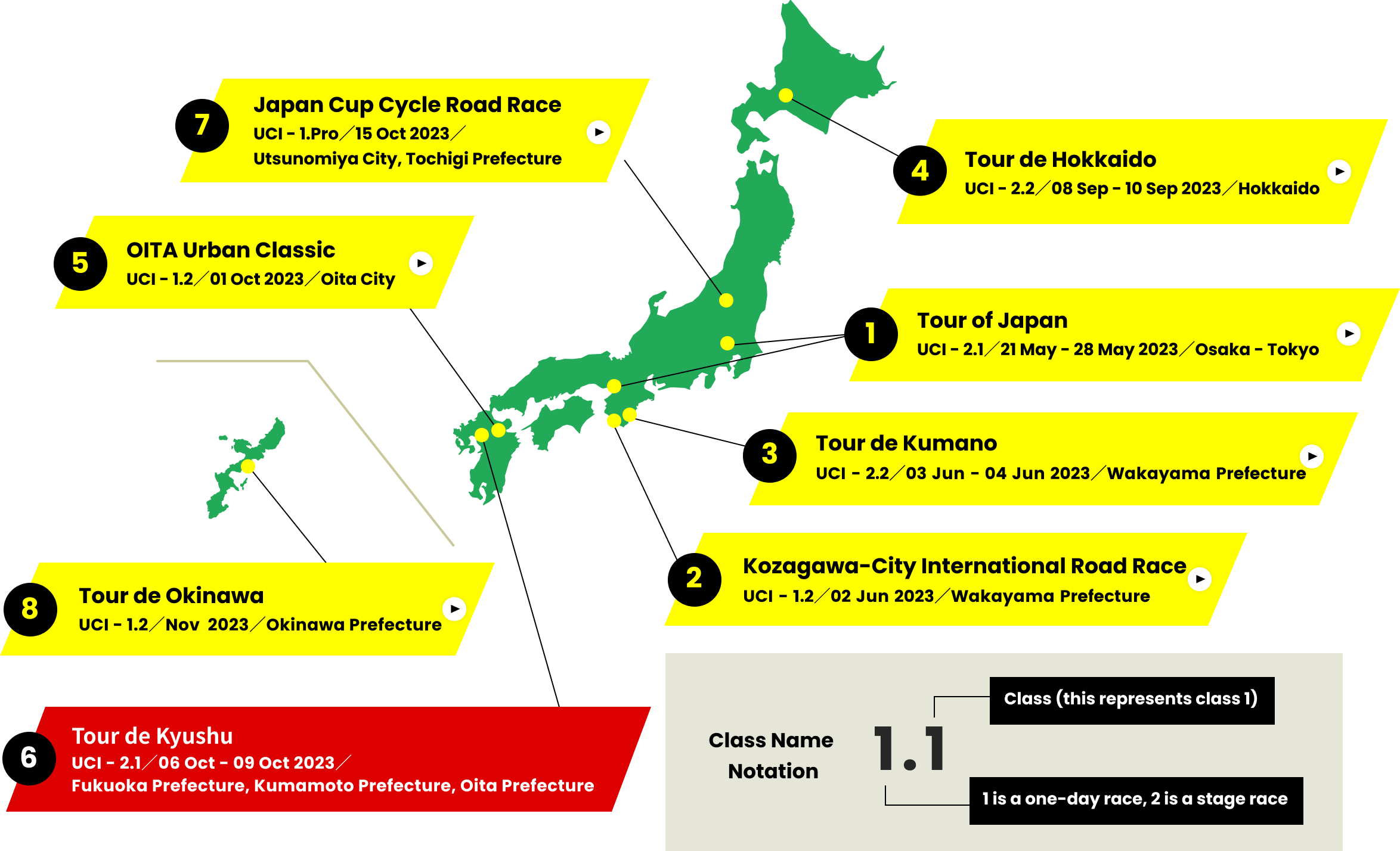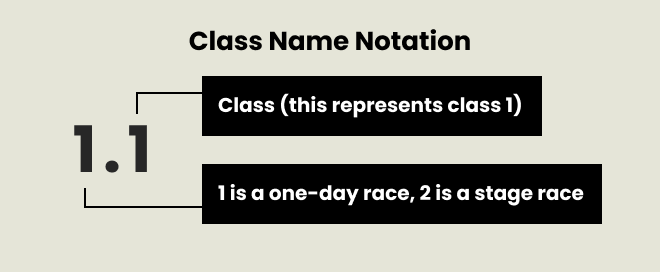WHAT IS A BICYCLE RACE
-
WHAT IS A BICYCLE RACE
-
SPECTATOR ETIQUETTE
coming soon -
SPECTATOR ETIQUETTE
coming soon
A stage race is much like a “bicycle marathon”.
Unlike in Keirin bicycle races, in road bicycle racing competitors ride long distances of over 100 km on public roads and whoever crosses the finish line first is the winner.
Bicycle road racing is both an individual and team sport.
The rules state that it’s a simple individual competition in which over 100 riders start at the same time and compete to see who can reach the finish line first. In reality, however, it is a team competition, in which each team tries to have its strongest rider (this rider is called the ACE) win the race. The reason for the team competition is that in road racing, AERODYNAMIC DRAG is the most difficult thing to deal with. When the speed doubles, aerodynamic drag increases to the square, and when the speed triples, aerodynamic drag increases to the cube. Therefore, the key to victory is to have all the other team members ride just in front of the ace in a formation to reduce aerodynamic drag, and to enable the ace to conserve their strength until just before the finish line.
Then, just before the goal, the ace will give their all to try to win the race for their team. The race tactics used against the other teams are the highlights of the competition, such as when the ace makes a move and starts riding in front. The main characteristic of this sport is that it is an individual competition by rule, but in reality it is a team competition.
The standard of value of performance in a bicycle road race is to have a winner from your team or to achieve a ranking close to the winner. On the other hand, if all six members of a team complete the race, the team will be rated the highest.
Conversely, if all six members finish the race, but the team's highest-placing athlete is lower-ranked, the team's rating will be lower.
Road Race Types
In addition to the above-mentioned races, bicycle road races include "criteriums," in which riders compete for positions by completing several laps of a course of about 1 to 3 kilometers per lap, with traffic restrictions on park paths and public roads in urban areas, and "individual time trials" and "team time trials," in which riders compete for the fastest finishing time on a set course.
There are four main categories of UCI sanctioned races
What is a UCI sanctioned race
"UCI" (Union Cycliste Internationale) is the international cycling federation, and UCI-certified races make it easier to secure the participation of "strong teams" (riders) that can attract a large audience, thus increasing the attractiveness of the race.
There are four main UCI-recognized race grades, and the higher the grade, the more high-level teams (riders) can be invited to participate. In addition, athletes who participate in UCI-certified races earn UCI points, which are awarded according to their rankings, and this can lead to the acquisition of a slot in the World Championships or the Olympics.
The Tour de Kyushu is a UCI Continental Series Class 1, in which leading international teams can also participate.


Currently, there are six international races held in Japan



-
Tour of Japan
UCI - 2.1/21 May - 28 May 2023/
Osaka - Tokyo -
kozagawa-city international road race
UCI - 1.2/02 Jun 2023/Wakayama Prefecture
-
Tour de Kumano
UCI - 2.2/03 Jun - 04 Jun 2023/
Wakayama Prefecture -
Tour de Hokkaido
UCI - 2.2/08 Sep - 10 Sep 2023/
Hokkaido -
OITA Urban Classic
UCI - 1.2/01 Oct 2023/Oita City
-
Tour de Kyushu
UCI - 2.1/06 Oct - 09 Oct 2023/
Fukuoka Prefecture, Kumamoto Prefecture, Oita Prefecture -
Japan Cup Cycle Road Race
UCI - 1.Pro/15 Oct 2023/
Utsunomiya City, Tochigi Prefecture -
Tour de Okinawa
UCI - 1.2/Nov 2022/Okinawa Prefecture
Teams also have categories which determine the grade of race they can compete in.
This is the top category for the world's top professionals.
You have the opportunity to compete in all World Tour races. Can also compete in Pro Series and Continental Series Class 1 races. Cannot compete in National Team Class 2.
Can compete in the Pro Series and below. (World Tour entry by invitation only)
Can compete in the Pro Series and below. There are 8 teams in Japan.
National teams. Can compete in the Pro Series and below.
Club teams organized in the region, etc. Club teams may only compete in the Continental Series Class 2.








